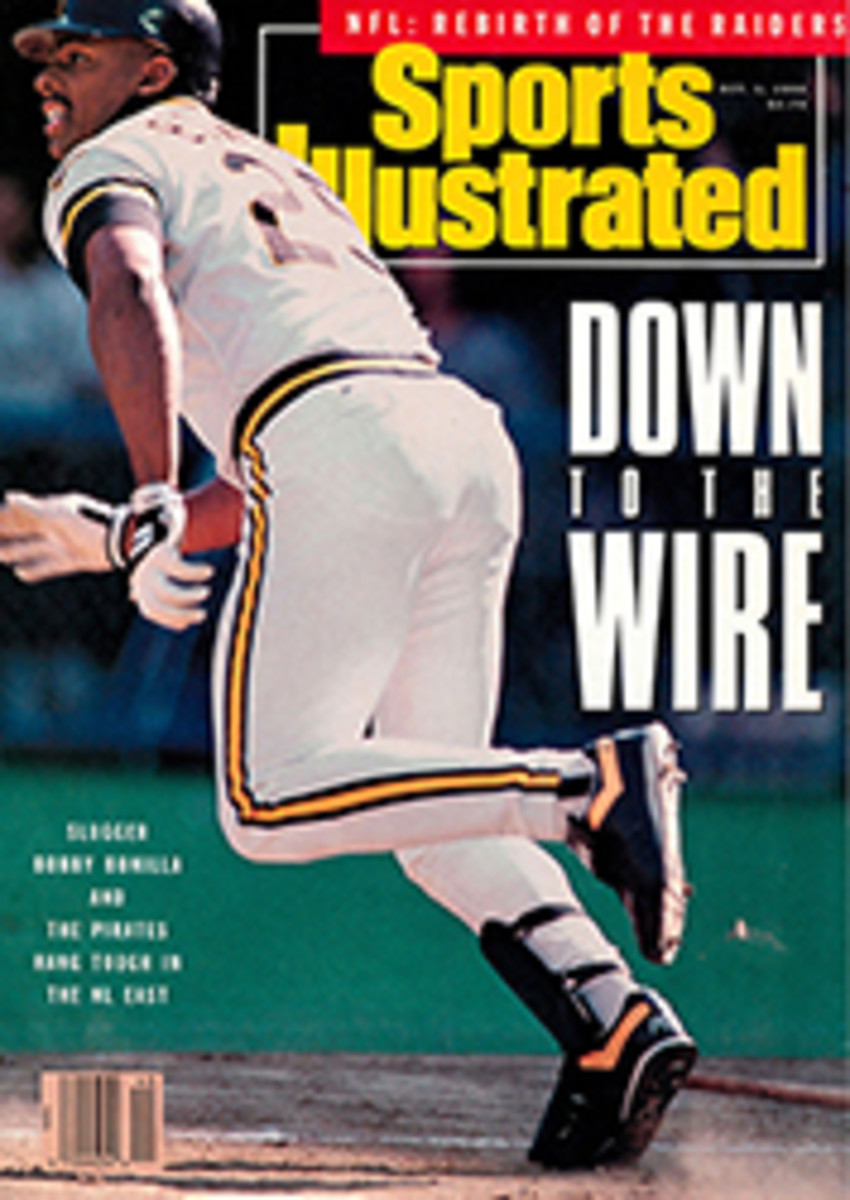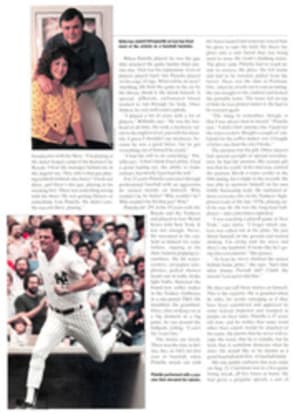
TRACKING THE TOPPS AND FLEERS
How's the market doing?
If you're wondering about the stock market, you can look up the Dow Jones Industrial Average. But if your pastime is baseball cards, then you pretty much have to guess. Sure, individual cards and sets are easily priced, but gauging the performance of the entire market, or even a sector of it, can be tougher than figuring out what sport Deion Sanders wants to play.
That may soon change, though, thanks to Ric Apter, a Wall Street stockbroker who has come up with a way to track the baseball card market. "Some brokerage houses survey how investors have done in assets like gold or real estate," says Apter, 46. "I'm the first to do this for card collectors."
Dubbed the Apter Card Average (ACA), the system works in much the same way as the Dow. The Dow comprises stocks from 30 industrial companies—IBM, GE and Exxon, to name a few—and although these represent only a fraction of all publicly traded securities, they're fairly representative of the stock market. Similarly, the ACA is derived from the values of 26 "blue chip" cards and sets. Apter went back to the 1950s—what he calls the dawning of the modern baseball card era—to make up that list. His market indicators include the 1951 Willie Mays Bowman No. 305, the 1952 Mickey Mantle Topps No. 311, and the 1954 Henry Aaron Topps No. 128. Apter chose nine cards from the 1950s, eight from the '60s, three cards and a set from the '70s and two cards and three sets from the '80s.
The selections were not arbitrary. "I was trying to get the best possible feel for the market," Apter says. "The ACA uses a couple of rookie cards because that's an important area. And it has a 1966 Gaylord Perry, mainly because that card is from a very small run and is a good reflection of how a rare card moves." For 1984 through '86, Apter opted for Fleer and Donruss sets, explaining, "I didn't want to skew the average by picking individual players who would have gone cheap in 1986 but would be worth much more today."
Next, Apter worked out a common price index to ensure that each card or set would have equal impact on the ACA. First, he valued all 26 cards and sets at market prices as of last Nov. 1. (He assumed that the 1951 through 1973 cards were in near mint condition and that the 1974 through 1986 cards and sets were mint.) Then he assigned each one a factor—a multiple to bring it to a value of $1,000. The 1955 Sandy Koufax Topps No. 123, for example, had a near mint value of $500, and a factor of two, which remains constant even as the value of the card increases or decreases.
Apter keeps up with the market by attending card shows regularly and by monitoring sale prices of his index cards through dealers and collectors. Every month he recalculates the ACA, which stood at $1,139 in August, an increase of more than 11% since last Nov. 1.
Apter got hooked on baseball cards when he was an eight-year-old living in the New York City suburb of Larchmont. He stopped collecting in his early teens and gave most of his cards away. But six years ago, he walked into a baseball card shop in New Hampshire. "I was overcome," he says. "If you're a fan, and you see an Orlando Cepeda card, then you get excited."
Apter got so excited that he started collecting again. He assembled a lineup of New York Giants and Mets cards that he currently values at $11,000. "I read everything I could on the subject," he says. He also began writing a column called "Collecting as an Investor" for Sports Collectors Digest, a weekly trade publication. He got the idea for the ACA while being interviewed one day by a newspaper reporter. "She wanted to know how the baseball card market was performing," he says. "I knew a lot about individual cards, but very little about the market as a whole. So I started thinking of ways to measure that."
Apter published his first newsletter last January, an eight-page monthly called Card Collector Commentary, available by subscription now for $48 a year.
Will the ACA become the Dow of the Donruss set? Hard to say. Other methods are likely to be tried and tested, and one of them may catch the fancy of the industry. But for now, nothing tracks the baseball card market like the ACA.
PHOTO
TOM IANUZZI
To keep up with trends in the market, Apter makes it his business to frequent card stores.

